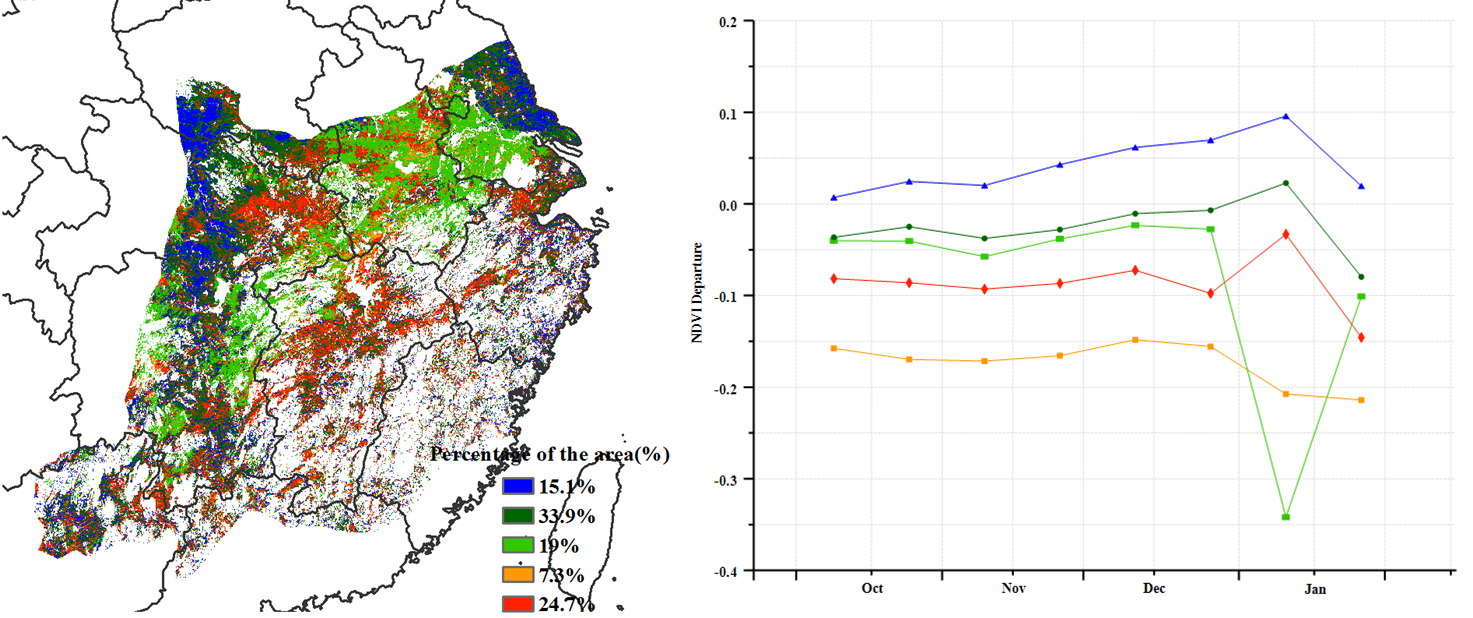During this monitoring period, only winter crops like wheat and rapeseed were in the field, mostly in the north of the region, including parts in Hubei, Henan, Anhui and Jiangsu provinces. There were basically no crops in Fujian and the southern Jiangxi and Hunan provinces. The overall crop condition is estimated to be unfavorable.
According to the CropWatch agro-climatic indicators, Lower Yangtze region experienced a warmer and drier winter compared to the 15YA with temperature at 1.2 ℃ above average and photosynthetically active radiation at 2% above average. The accumulated precipitation, however, was significantly below average (RAIN,-17%). Even so, the warmer weather and above average radiation still led to a 7% increase in potential biomass compared to the 15YA. Potential Biomass departure map shows the spatial variation of the weather impact on crops. Most parts of Jiangxi, Fujian and Southern Hunan had large positive anomalies up to 20% above average. This was due to the above average radiation in Jiangxi and Fujian and slightly above average rainfall in Hunan.
As shown in the NDVI development graph, crop conditions were below the 5-year average. Only 15.1% of the area, mostly distributed in the northwest and northeast of this region including Jiangsu, Hubei and Henan provinces, had slighthly better crop conditions as compared to the five-year average. NDVI in the remaining areas presented below average patterns, presumably due to below average rainfall. The red and orange areas concentrated in Jiangxi, Zhejiang and western Hubei, which account for 32% of the total area, were significantly below average.
The crop condition in the lower Yangtze region is currently assessed as close to but below average.
Figure x.x. Crop condition Lower Yangtze region, October 2019 to January 2020
- (a) Crop condition development graph based on NDVI

- (b) Spatial NDVI patterns compared to 5YA (c) NDVI profiles


(d) Maximum VCI (e) Biomass

